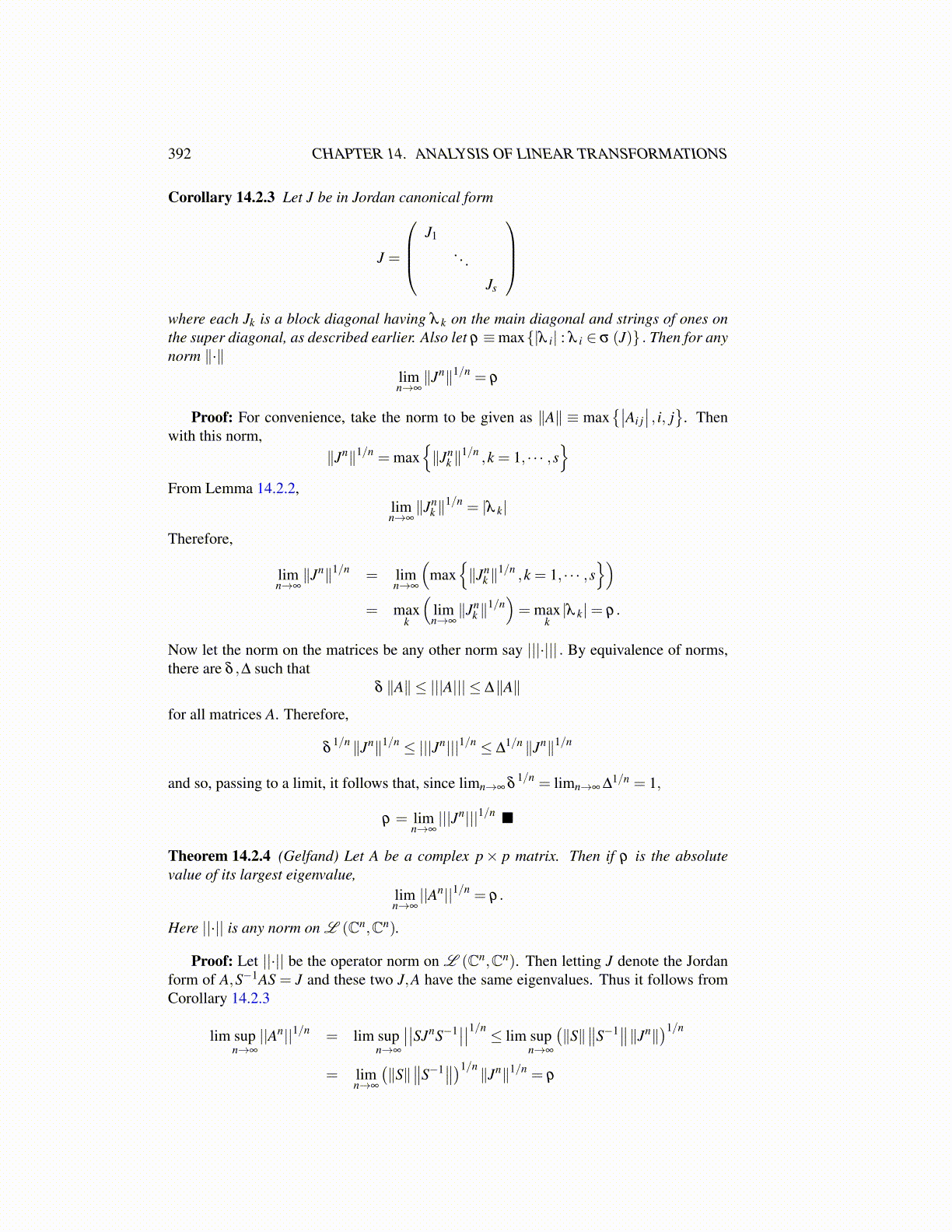
392 CHAPTER 14. ANALYSIS OF LINEAR TRANSFORMATIONS
Corollary 14.2.3 Let J be in Jordan canonical form
J =
J1
. . .
Js
where each Jk is a block diagonal having λ k on the main diagonal and strings of ones onthe super diagonal, as described earlier. Also let ρ ≡max{|λ i| : λ i ∈ σ (J)} . Then for anynorm ∥·∥
limn→∞∥Jn∥1/n = ρ
Proof: For convenience, take the norm to be given as ∥A∥ ≡ max{∣∣Ai j
∣∣ , i, j}
. Thenwith this norm,
∥Jn∥1/n = max{∥Jn
k ∥1/n ,k = 1, · · · ,s
}From Lemma 14.2.2,
limn→∞∥Jn
k ∥1/n = |λ k|
Therefore,
limn→∞∥Jn∥1/n = lim
n→∞
(max
{∥Jn
k ∥1/n ,k = 1, · · · ,s
})= max
k
(limn→∞∥Jn
k ∥1/n)= max
k|λ k|= ρ.
Now let the norm on the matrices be any other norm say |||·||| . By equivalence of norms,there are δ ,∆ such that
δ ∥A∥ ≤ |||A||| ≤ ∆∥A∥
for all matrices A. Therefore,
δ1/n ∥Jn∥1/n ≤ |||Jn|||1/n ≤ ∆
1/n ∥Jn∥1/n
and so, passing to a limit, it follows that, since limn→∞ δ1/n = limn→∞ ∆1/n = 1,
ρ = limn→∞|||Jn|||1/n ■
Theorem 14.2.4 (Gelfand) Let A be a complex p× p matrix. Then if ρ is the absolutevalue of its largest eigenvalue,
limn→∞||An||1/n = ρ.
Here ||·|| is any norm on L (Cn,Cn).
Proof: Let ||·|| be the operator norm on L (Cn,Cn). Then letting J denote the Jordanform of A,S−1AS = J and these two J,A have the same eigenvalues. Thus it follows fromCorollary 14.2.3
lim supn→∞
||An||1/n = lim supn→∞
∣∣∣∣SJnS−1∣∣∣∣1/n ≤ lim supn→∞
(∥S∥
∥∥S−1∥∥∥Jn∥)1/n
= limn→∞
(∥S∥
∥∥S−1∥∥)1/n ∥Jn∥1/n = ρ